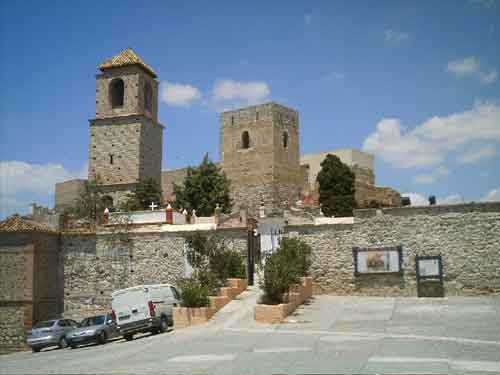Álora, in the fertile Guadalhorce Valley, is a small town with a rich historical heritage. The Phoenicians were early settlers in the area, laying the foundations for the almost impregnable Álora castle which, in its latter years, became the town cemetery. The Romans also valued Álora, or ‘Iluro’ as they called it, and between 81 and 96 A.D. was an important trading centre for oil, wheat, barley, honey and wine.
The town even minted its own coins. On the patio of the parish church is a monolith from the time of Emperor Domitian (Titus Flavius Domitianus) which bears the inscription ‘Municipium Iluritanum’. Vandals conquered the town in the 5th century, followed by the Visigoths and then the Moors.
The castle, overlooking the entire Málaga basin, became strategically important and was attacked, besieged and assaulted on numerous occasions by the Christian kings. Alfonso VIII had a go in 1184, Alfonso XI followed suit in 1319, John II in 1434 and Enrique IV in 1455. The town finally fell into Christian hands on June 10th 1484.
An easy way to reach the town is on the Cercania – local railway- from Málaga, a journey of about 45 minutes.
The scenery en route is excellent, especially when driving, and you pass through vast lemon orchards before heading up into the hills where the views are magnificent. The streets of Álora are very narrow, windy and invariably very steep and driving around is not the easiest task, better to park and walk if possible.
The ruins of the Arab castle, now a cemetery, and the 17th century Iglesia Parroquial de Nuestra Señora de la Encarnación are perched on the top of the hill and afford a great view of the area.
Statistics
Area: 170 square kilometres
Altitude: 194 mtrs above sea level
Population: +/- 13,000
Distance from Nerja: 98 km
Driving Time: +/- 1 hour 30 mins
Places of Interest
17th century Iglesia Parroquial de Nuestra Señora de la Encarnación
16th century Santuario de Nuestra Señora de Flores
15th century Capilla del Castillo-Cementerio
16th century Capilla del Cristo de la Vera-Cruz
Castillo árabe (remains)
Arroyo Hondo (Iberian remains)
Canca (Roman villa and baths)
Carril de los Muertos (necropolis)
Local Cuisine
Local specialities include: Sopa Perotas (soup with seasonal vegetables or fruit), Gazpacho Pimentón (chilled tomato, garlic and vegetable soup with paprika), Calabacete (sweet pumpkin), Majaíllo de Espárragos (ground asparagus) and Yam pastries.
Local Festivals
Semana Santa – Holy Week celebrations with processions on Palm Sunday, Maundy Thursday, Good Friday and Easter Sunday.
Feria Real – (July 29th – August 2nd)
Fiestas Patronales (Between August 5th and 9th) – A cattle fair and other social and cultural events.
Romería de la Virgen de la Cabeza (September) – Celebrations in honour of the village patron.
Useful Info
Town Hall
Tel: (0034) 952496100
Tourist Office
Tel: (0034) 952498380

